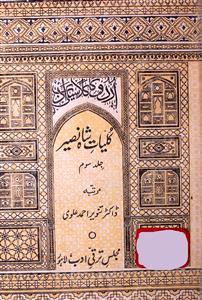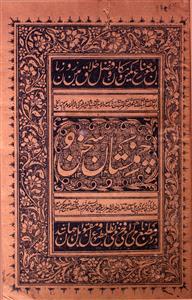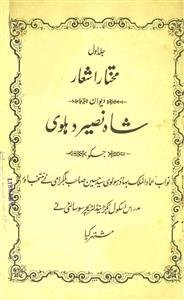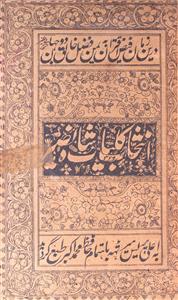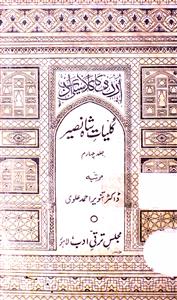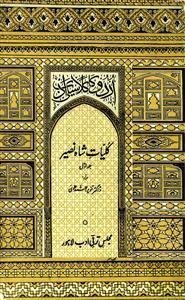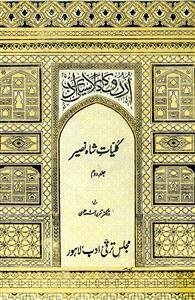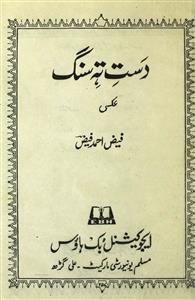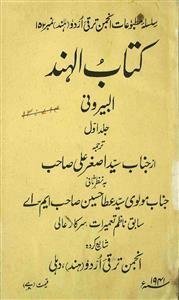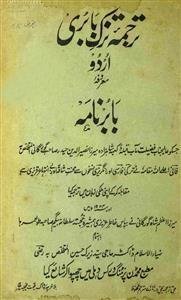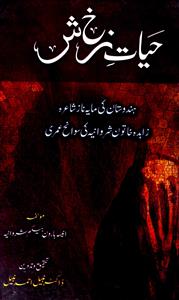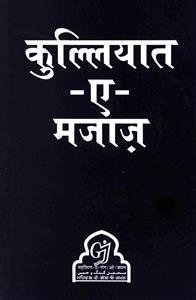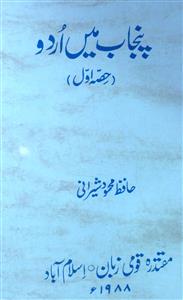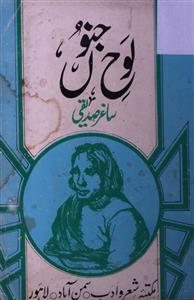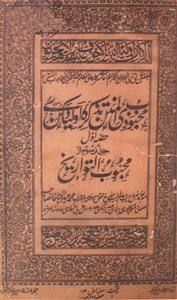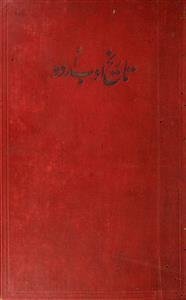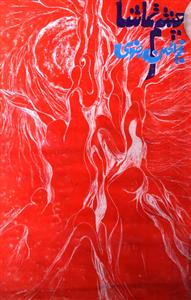 For any query/comment related to this ebook, please contact us at haidar.ali@rekhta.org
For any query/comment related to this ebook, please contact us at haidar.ali@rekhta.org
About The Book
شاہ نصیر کا شمار اپنے عہد کے ممتاز شعرا اور دہلی کے نامور اساتذہ میں ہوتا ہے۔ان کا تعلق ایک خانوادہ تصوف سے ہونے کے باوجود شعر وسخن سے کافی زیادہ دلچسپی تھی۔ان کی شاعری کا زمانہ اردو شعر ادب کی تاریخ کے اس دور سے تعلق رکھتا ہے جس وقت معنی سے زیادہ صورت اور معیار سے زیادہ مقدار کی اہمیت پر زیادہ زور دیا جا رہا تھا۔دہلی کے علاوہ بعض دوسرے شہروں میں بھی مشاعرے عام ہوچکے تھے۔مقامی اور غیر مقامی طور پر گروہ بندیاں بنتی جارہی تھیں۔بحور اوزان سے واقفیت اور الفاظ و محاوارت پر قدرت کو کمال استادی اور معیار شاعری سمجھا جانے لگا تھا ۔شاہ نصیر کے شعور و شعر کا مطالعہ ان کے عہد کے اسی ادبی میلان اورشاعرانہ افتاد مزاج کو سامنے رکھتے ہوئے کیا جا نا چاہئے۔ "کلیات شاہ نصیر" ان کے تین قلمی نسخوں ،دو قلمی انتخابات اور دو مطبوعہ نسخوں کی مدد سے تیار کی گئی ہے۔ جس کو ایک طویل مبسوط مقدمہ کے ساتھ تنویر احمد علوی نے چار جلدوں میں ترتیب دیا ہے۔ پہلی، دوسری اور تیسری جلد میں ردیف وار غزلیں ہیں جبکہ چوتھی جلد میں قصائد اور قطعات و رباعیات ہیں۔ ابتد امیں شاہ نصیر کی سوانح حیات اور آخر میں معلوماتی حواشی بھی شامل ہیں۔ زیر نظر جلد سوم ہے۔
About The Author
Mohammad Nasiruddin alias Mian Kallu, popularly called Shah Nasir, was a prominent sufi of his age. His father was also a saint and enjoyed great respect in his society. Nasiir did not have good education perhaps because of his lack of interest in academics. He succeeded his father as 'Sajjada Nashin' of his Dargah in 1768. Nasir was attracted to poetry at an early age and became a pupil of Shah Mohammad Mail, who was a disciple of Qayem Chandpuri, and was casually associated with Khawaja Meer Dard. Nasir was a talented man and had a very good command of the poetic diction of Delhi. It is said that he would challenge his opponents in poetic gatherings and claim his superiority in extempore composition of couplets. Nasir gained popularity as a poet in subsequent years and was appointed a master guide to the members of the royal family and to others. He travelled to other places, especially Meerut and Lucknow, where he met great masters like Jurat, Mushafi, Aatish and Nasikh. Nasir had good mastery over the poetic art and his compositions in complicated metres and difficult radiffs are an evidence of his unmatched skill. He is said to be a trend-setter of his age. Eminent poets like Momin, Zauq and Zafar were his pupils.
 For any query/comment related to this ebook, please contact us at haidar.ali@rekhta.org
For any query/comment related to this ebook, please contact us at haidar.ali@rekhta.org
